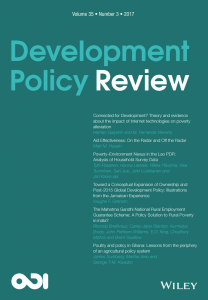The Clothes Make the (Heterosexual) Man
 Dress codes in schools have long been a source of intergenerational conflict, control, and increasingly obvious, a way to police gender norms and sexuality. In an article that interrogates these instances of specific gender and sexuality “violations” through clothing and accessories, we can see both an increase in apparel as a means of identity formation and exploration but also a trend that has received little attention. Why is it that anytime a child or teen decides to transgress norms through clothing in particular there is an assumption of gender ambiguity and homosexuality? Certainly when women first began to wear pants in place of skirts they were not necessarily declaring their lesbianism nor a desire to be men. The ability to use clothing as an expression of the exploration of gender, of sexuality, of trans identities is certainly an important aspect of psychological development but so too is using clothing to articulate a sense of individual identity, to challenge parental authority, to mark oneself as part of a collective. This notion that somehow a boy who wears a dress is automatically gay and feminine only reveals what Judith Butler argued in Gender Trouble, that we continue to uphold a binary gender system that is perfectly mapped onto a particular sexual binary. In other words, a girl who wants to wear a tuxedo probably wants to be a boy, and gay. As the saying goes, the clothes make the man (as long as he is attracted to girls and wears pants!)
Dress codes in schools have long been a source of intergenerational conflict, control, and increasingly obvious, a way to police gender norms and sexuality. In an article that interrogates these instances of specific gender and sexuality “violations” through clothing and accessories, we can see both an increase in apparel as a means of identity formation and exploration but also a trend that has received little attention. Why is it that anytime a child or teen decides to transgress norms through clothing in particular there is an assumption of gender ambiguity and homosexuality? Certainly when women first began to wear pants in place of skirts they were not necessarily declaring their lesbianism nor a desire to be men. The ability to use clothing as an expression of the exploration of gender, of sexuality, of trans identities is certainly an important aspect of psychological development but so too is using clothing to articulate a sense of individual identity, to challenge parental authority, to mark oneself as part of a collective. This notion that somehow a boy who wears a dress is automatically gay and feminine only reveals what Judith Butler argued in Gender Trouble, that we continue to uphold a binary gender system that is perfectly mapped onto a particular sexual binary. In other words, a girl who wants to wear a tuxedo probably wants to be a boy, and gay. As the saying goes, the clothes make the man (as long as he is attracted to girls and wears pants!)
NYTimes, “Can a Boy Wear a Skirt to School?”
![]() Judith Butler in the Blackwell Companion to Social Theorists
Judith Butler in the Blackwell Companion to Social Theorists




1540-6237/asset/SSSA_Logo-RGB.jpg?v=1&s=c337bd297fd542da89c4e342754f2e91c5d6302e)
1475-6781/asset/JSS.gif?v=1&s=377bb8e0c3d0fcf201f301ded7cf610142072c3e)
Great post on a different reason that we should be asking questions about power, control, identity, and attire. It makes me wonder what wearing a skirt, pants, etc.. means to the person who wears it (male or female). Clothes should not make a person–a person should be able to perform/express identity through clothes. Very interesting…
Keri